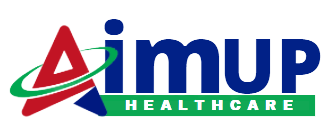ICD-10-CM codes are important because they are more granular than ICD-10 codes and can provide more information about the severity of a patient’s condition.It provides a level of detail that is necessary for diagnostic specificity and morbidity classification in the U.S. According to WHO, physicians, coders, health information managers, nurses and other healthcare professionals also use ICD-10-CM to assist them in the storage and retrieval of diagnostic information. ICD records are also used in the compilation of national mortality and morbidity statistics.
HCPCS codes are numbers Medicare assigns to every task and service a medical practitioner may provide to a patient. There are codes for each medical, surgical, and diagnostic service. HCPCS stands for Healthcare Common Procedure Coding System. HCPCS billing codes are monitored by CMS, the Centers for Medicare and Medicaid Services. They are based on the CPT Codes (Current Procedural Technology codes) developed by the American Medical Association. HCPCS codes are regulated by HIPAA, which requires all healthcare organizations to use the standard codes for transactions involving healthcare information.
Surgical specialty coding, part of overall CPT coding covers the most complex portion of the CPT codes and presents procedural, modifier, and diagnostic coding challenges. We make sure there is no risks arising due to risks of upcoding or undervaluation
The diagnoses and procedure codes are taken from medical record documentation, such as transcription of physician’s notes, laboratory and radiologic results, etc. Medical coding professionals help ensure the codes are applied correctly during the medical billing process, which includes abstracting the information from documentation, assigning the appropriate codes, and creating a claim to be paid by insurance carriers.Medical coding happens every time you see a healthcare provider. The healthcare provider reviews your complaint and medical history, makes an expert assessment of what’s wrong and how to treat you, and documents your visit. That documentation is not only the patient’s ongoing record, it’s how the healthcare provider gets paid
The Center for Medicare & Medicaid Services (CMS) uses a Hierarchical Condition Category (HCC) risk adjustment model to calculate risk scores. The HCC model ranks diagnoses into categories that represent conditions with similar cost patterns. Higher categories represent higher predicted healthcare costs, resulting in higher risk scores.Long-term conditions such as diabetes, chronic obstructive pulmonary disease (COPD), chronic heart failure (CHF), and diabetes will “risk adjust,” or fall within an HCC. To factor into risk adjustment, a diagnosis must be based on clinical medical record documentation from a face-to-face encounter, documented at least once per year, and coded according to the ICD-10-CM guidelines
Insurance providers may require various billing procedures, so the physician’s office must also check with the insurance provider to establish their specific billing requirements, and be prepared to meet those requirements. AimUP Healthcare defines the right insurance specific coding such that the claims can proceed smoothly, both for the patient, insurance provider, and physician’s office.
We verify all healthcare coding documents using advanced Computer Assisted Coding Systems which produces appropriate medical codes for specific phrases and terms within the document.
An Encounter form or Superbill or Charge Sheet is a very important document in the medical billing process. A healthcare provider indicates all the diagnosis and procedures of a patient in the encounter form.
